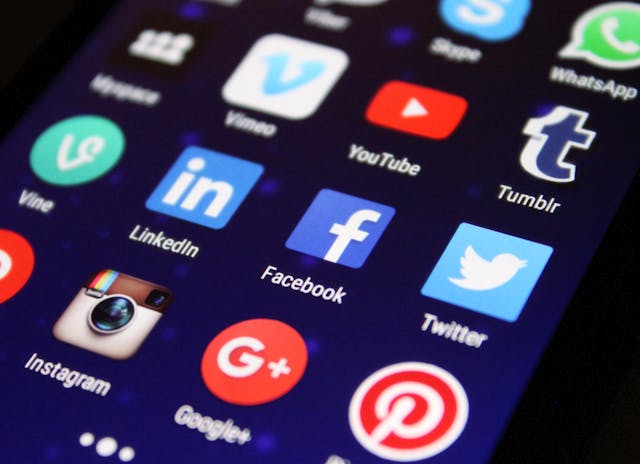In today’s digital age, social media platforms have become an integral part of teenagers’ lives, offering a space for self-expression, communication, and community building. However, with the benefits come inherent risks that can significantly impact the well-being of adolescents.
In this article, we will dive into the multifaceted risks teenagers encounter on social media platforms. We will highlight the potential consequences and the need for proactive measures to ensure a safer online environment.
Cyberbullying and Harassment
Social media platforms, while offering a space for connection and self-expression, have unfortunately become breeding grounds for cyberbullying and harassment among teenagers. Because of the anonymity offered by these platforms, people are more likely to participate in harmful activities without fear of immediate consequences.
According to a 2022 report by the Pew Research Center, 46% of U.S. teens report being cyberbullied on social media at least once.
Cyberbullying takes various forms, including spreading rumors, sharing compromising images, and using derogatory language. The psychological toll on teenagers facing cyberbullying is immense. Studies indicate a strong correlation between online harassment and increased levels of anxiety, depression, and suicidal ideation.
The constant connectivity to social media makes it challenging for victims to escape the torment, leading to long-lasting emotional scars. Schools and parents must collaborate to implement anti-bullying programs and educate teens on responsible online behavior. This promotes an environment where they feel safe to report incidents without fear of retaliation.
Privacy Concerns and Data Exploitation
Privacy breaches and data exploitation are rampant on social media, posing significant risks to teenagers who may unknowingly share sensitive information. Social media platforms often collect extensive data on users, including personal preferences, locations, and even biometric data.
This information can be exploited by third parties for targeted advertising or, more nefariously, identity theft. As noted by Statista, data breaches exposed more than eight million records worldwide during the fourth quarter of 2023.
To mitigate these risks, it is crucial for teenagers and their parents to understand privacy settings and limit the sharing of personal information.
Educational initiatives should emphasize the importance of digital literacy, empowering teens to make informed decisions about what they share online. Additionally, advocating for stronger data protection regulations and ethical practices within the tech industry is essential to safeguarding the privacy of teenage users.
Addiction and Mental Health Impacts
The pervasive nature of social media has contributed to a concerning rise in addiction among teenagers. According to HelpGuide.org, excessive screen time on social media platforms has been linked to various mental health issues. This includes anxiety, depression, and feelings of loneliness.
Studies suggest that the instant gratification provided by social media interactions triggers the release of dopamine, reinforcing addictive behaviors. Parents and educators should prioritize open communication with teenagers, fostering an understanding of the potential risks associated with excessive social media use.
Implementing screen time restrictions, promoting offline activities, and encouraging a balance between online and offline life are crucial steps in addressing this growing concern.
Influence of Unrealistic Beauty Standards
Social media platforms often serve as virtual showcases of idealized beauty standards. These platforms promote unrealistic images that can have detrimental effects on teenagers’ self-esteem and body image.
The constant exposure to carefully curated and filtered images can lead to feelings of inadequacy and pressure to conform to societal expectations. Research indicates a strong correlation between social media use and body dissatisfaction among teenagers, with influencers and celebrities setting unattainable beauty norms.
To counteract this influence, there is a need for media literacy programs that teach teenagers to evaluate and deconstruct the images they encounter online. Encouraging diverse representations of beauty and promoting self-acceptance can help teenagers develop a healthier relationship with their own bodies.
Online Predators and Grooming
The anonymity provided by social media platforms can attract online predators seeking to exploit vulnerable teenagers. Grooming, a process where predators build trust with their targets to facilitate manipulation and exploitation, is a significant risk that requires attention.
Predators often pose as peers, gradually establishing connections before exploiting their victims. To address this danger, parents and guardians must engage in open conversations with teenagers about online safety. They should emphasize the importance of not sharing personal information with strangers.
Schools can implement educational programs that teach students to recognize grooming tactics and the importance of reporting suspicious behavior. Additionally, social media platforms should invest in advanced algorithms and reporting mechanisms to identify and eliminate accounts engaged in predatory behavior.
Lawsuits and Legal Consequences
As social media interactions become more integral to teenagers’ lives, they may inadvertently find themselves entangled in legal issues with profound consequences. According to TorHoerman Law, instances of cyberbullying, defamation, or the unauthorized sharing of sensitive information can result in lawsuits. This can leave lasting impacts on both the victims and perpetrators.
Cyberbullying on platforms like Snapchat, Facebook, and Instagram can lead to distress, depression, and anxiety among teenagers who fall victim to such online harassment. The emotional toll of cyberbullying is well-documented, and it has led to tragic consequences such as self-harm and even suicide.
TorHoerman Law states that social media platforms, including Facebook, Snapchat, and Instagram, have faced lawsuits for inadequately addressing cyberbullying concerns.
One notable instance is the Facebook lawsuit. The social media giant has been taken to court for its alleged negligence in preventing and addressing cyberbullying on its platform. Plaintiffs argue that Facebook failed to implement sufficient measures to protect users from harassment and failed to promptly respond to reports of such incidents.
Similarly, Snapchat has faced legal consequences related to cyberbullying issues on its platform. With its focus on disappearing content, Snapchat has become a breeding ground for anonymous harassment and harmful content sharing. Many parents have filed a Snapchat lawsuit, claiming that the platform’s design and policies contributed to the prevalence of cyberbullying incidents.
Instagram, another popular social media platform, has also found itself entangled in legal battles over cyberbullying cases. Users have filed lawsuits against Instagram, accusing the platform of not doing enough to prevent and address instances of harassment and hate speech. These legal actions seek compensation for the emotional distress and potential long-term consequences faced by victims of cyberbullying.
Impact on Academic Performance
The pervasive use of social media can have detrimental effects on teenagers’ academic performance, as it often becomes a source of distraction. Constant notifications, the allure of endless scrolling, and the temptation to engage in online conversations can divert attention from homework and studying.
To address this issue, educators and parents should collaborate to instill effective time management skills in teenagers. Establishing designated study periods without digital distractions and encouraging the use of productivity tools can help mitigate the impact of social media on academics.
Additionally, fostering a supportive environment where students feel comfortable seeking help when struggling with balancing online and offline responsibilities is crucial for their success.
In summary, the intricate landscape of social media presents teenagers with diverse challenges, ranging from cyberbullying to privacy concerns, addiction, and legal consequences. Safeguarding their well-being demands a comprehensive approach, involving parents, educators, and the platforms themselves.
Empowering teens through digital literacy, open communication, and support mechanisms is paramount. The influence of unrealistic beauty standards and the risks posed by online predators underscore the need for continued awareness and education.
As social media intertwines academic and personal spheres, a balance must be struck to ensure a positive online experience for the younger generation.














